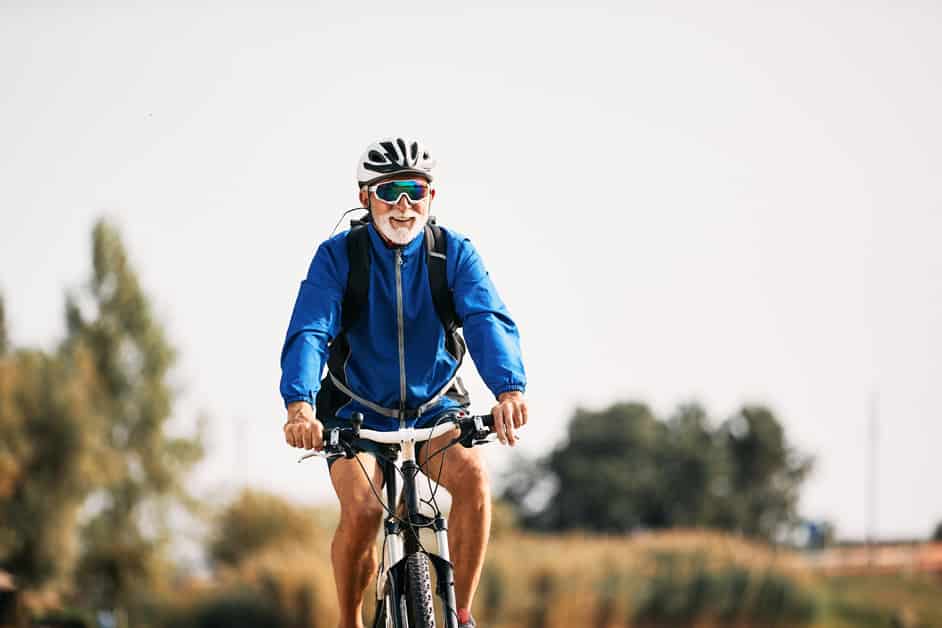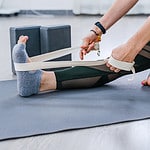Introduction
Knee pain can be difficult to manage, but low-impact physical activities can help. Whether you have a chronic condition, an injury, or just want to stay healthy, these kinds of activities reduce stress on the joints and can keep you in shape. It’s important to be mindful of your body’s limitations and stop if you feel pain or discomfort.
What is a low-impact sport? It combines slow, controlled movements and balance exercises, building strength, coordination and endurance. The following overview will discuss how they can help those with knee pain. We’ll explain which activities are best, and provide tips on how to do them safely:
The Benefits of Low-Impact Sports
Knee pain doesn’t mean you can’t stay active! Low-impact sports are a great option for exercising without putting extra pressure on your knees. This article will explain the advantages of these kinds of sports, and how they can help reduce pain caused by knee injuries.
Improved Mobility
Low-impact sports bring many benefits, such as increased mobility. Swimming, biking and jogging are all good low-impact activities. They help reduce pain in the knees and ankles. Exercise keeps the joints lubricated and helps avoid future problems.
It also strengthens muscles, increases flexibility, improves balance, agility and posture. All of this adds up to an effective form of physical therapy, which can keep you active and reduce the risk of injury or pain.
Also, low-impact sports have mental benefits. They can help concentration, lower depression and anxiety, reduce stress and improve overall life quality. Positive movement habits gained from low-impact sports can have long term effects on physical and mental health.
Reduced Pain
Low-impact sports are great for those with joint pain or musculoskeletal issues. These don’t involve intense physical contact or jarring motions. Thus, they reduce body stress and exertion. Arthritis sufferers may find area-specific exercises helpful in reducing pain and improving joint function.
Low-impact sports can be done while seated too, making them easier for those with limited mobility. Furthermore, water sports are a great way to stay active without stressing the joints. The buoyancy of the water reduces impact, but still gives resistance.
Low-impact exercises such as swimming, stationary cycling, and yoga are good for cardiovascular fitness, with less wear and tear than high-impact activities like running or football.
Improved Strength
Low-impact physical activities can benefit people with knee pain. These activities are less intense, so they don’t strain the joints as much. Examples are swimming and water aerobics. Additionally, yoga classes can help strengthen muscles without putting too much force on the joints. Exercises that strengthen the core muscles can also help maintain balance and give extra stability when doing strenuous activities like jogging.
Low-impact exercises can also improve endurance, flexibility, range of motion, and mobility. This is helpful when doing challenging sports or exercises. Supplementing regular workouts with less intense activities such as swimming or yoga can build up confidence. Plus, it offers protection for vulnerable knee joints.
Types of Low-Impact Sports
Knee pain? Don’t worry! Staying active helps. Low-impact sports can be a great way. They put less strain on your joints. Perfect for those with knee pain.
Here are some examples of low-impact sports to stay active. Have a look!
- Swimming
- Cycling
- Yoga
- Tai chi
- Pilates
- Walking
Swimming
Swimming is an ideal exercise for those with knee pain or joint issues. It takes off the pressure but still builds strength and helps with mobility. Plus, it is an aerobic exercise, which boosts cardiovascular health. If you have access to a pool, you can find classes made for people with restricted mobility.
On the downside, swimming can be a strain on joints. To avoid injuries, try different strokes, like breaststroke or backstroke, instead of freestyle. You can also wear fins. They not only supply resistance against the water, but protect against overuse injuries.
Cycling
Cycling is an awesome, low-impact workout. It’s a great way to stay fit, build strength and stamina, and explore the outdoors. Types of cycling include mountain biking, road biking, and cyclocross.
- Mountain biking is on trails that can be easy or tough.
- Road biking includes hills and flat terrain.
- Cyclocross is done off-road with jumps, logs and other trail debris.
Cycling is perfect for everyone’s fitness level. You get the advantages of being active, while you pick your own routes and decide how long to ride. Plus, it’s a great way to get around for commuting or errands, and it’s eco-friendly.
Yoga
Yoga is an old practice from India. It has physical poses, breathing, and meditation. It helps with balance, flexibility, muscles, and core. It calms your mind and reduces stress.
It’s essential to move slowly and gradually with the breath while doing yoga. Remember to listen to your body when taking on difficult poses. There are variations of postures for all levels of flexibility. Use props like blocks if needed.
Yoga can help with knee pain. It strengthens the muscles around the knee joint with poses like Warrior I, II, & III, and Triple pose, pyramid pose, and lunges. This helps reduce pain due to past injuries or arthritis. Regular practice of yoga postures keeps a good range of motion in the joint and reduces pain. Chair yoga is great for those with mobility issues or stiff joints due to age.
Pilates
Pilates is a low-impact exercise that is great for those with knee pain. It strengthens core muscles and stabilizes the spine, helping to prevent and reduce knee pain. Plus, it improves posture and flexibility – two key elements for avoiding knee pain.
The movements are slow and gentle and don’t require high intensity or jumping. No leaping or jerking actions are included. Resistance bands can be used, but should be at a comfortable weight to minimize joint stress.
Low-impact Pilates is an ideal exercise for people with knee pain. It strengthens core muscles and supports joints without putting too much strain on them. Plus, it’s suitable for all ages who want to stay active without worsening their injuries or ailments.
Tai Chi
Tai Chi is an ancient Chinese exercise that has been getting popular lately. Its movements are soft, graceful and slow. Though it looks like a dance, it’s really a martial art used for self-defense and good health. This low-impact exercise is good for people with knee pain because it is gentle on the joints.
Tai Chi combines martial arts and meditation. So, it has many benefits, like good mental health, better balance, muscle strength, better posture, less physical soreness and reduced stress. Also, its low-impact movements make it a good alternative to running or other high-impact sports activities.
Tai Chi classes involve repeating choreographed movements over time to perfect them. If you’re looking for a fun way to increase your strength and flexibility and to lessen knee pain or illnesses like arthritis, take a Tai Chi class with an experienced instructor. Classes should be held twice a week.
Tips for Staying Active with Knee Pain
Knee pain can really put a damper on your life. But luckily, there’s a way to stay active despite it! Low-impact sports such as swimming, cycling, and yoga are great for those suffering from knee pain. Let’s explore the power of these sports and how they can help you stay active and free from pain.
Warm Up and Cool Down
It’s essential to warm up and cool down before any physical activity. Your warm-up should be slow and dynamic, and last at least 5-10 minutes. This helps your heart rate and muscles prepare. It can also help with reconditioning tired muscles, joint pain, stiffness, or soreness.
After physical activity, you should cool down. This helps calm mind and body. It also reduces after-exercise soreness or discomfort. Start with easy walking or jogging to decrease intensity levels. Then, finish with active stretching. Focus on major muscles used during workout session. Increase mobility in joints, muscle elasticity, and flexibility.
Listen to Your Body
Staying active is a must for managing knee pain. However, it’s important to listen to your body. Exercise gently and gradually increase intensity as your knee joint health allows. If you feel pain during an activity, take a break, modify the activity, or reduce the intensity.
Low-impact exercises are best for reducing stress on joints, such as walking, swimming, yoga, and Pilates. These exercises can be tailored to different levels and needs, according to a specialist in knee rehabilitation.
In addition, low-impact exercises should be complemented with other forms of treatment. This may include therapeutic massage, which increases blood circulation and helps muscles relax. Focusing on this combination can provide long-lasting improvements. It can also help those affected by knee joint pain engage in ongoing home care therapies, and notice changes over time after professional treatments are done.
Wear the Right Gear
It’s vital to have the proper gear when exercising with knee pain. Wearing clothing and shoes that fit well can lessen the risk of knee pain. Clothes should be lightweight and flexible, allowing a full range of motion. Shoes should give ample support and cushioning, along with a solid sole that’s not too rigid to stop shock from affecting your knees.
Other important gear for staying active with knee pain include knee braces and supports. Some braces can be worn all day offering compression and extra stability. Others can be used while exercising, reducing inflammation and discomfort in the knees.
Yoga mats, foam rollers, or stretching bands might be necessary, depending on what activities you do or what type of knee pain you have. Speak to your doctor prior to exercising, so they can recommend the best gear for you.
Seek Professional Advice
Seek professional advice if you have knee pain. A doctor or therapist can evaluate your situation and provide advice on which activities would be best. Check with your insurance company as they usually cover visits to a therapist.
A certified athletic trainer or exercise physiologist can help you stay active while managing the knee pain. They may suggest special exercises, a brace or an orthotic device to reduce pain and pressure.
Conclusion
To sum up, with knee pain, staying active can be done with low-impact sports and activities. Low-impact exercises are activities that reduce stress on your knee joint and muscles around it, and which are usually less demanding than high-impact activities.
Discovering the right activity for you is essential to keeping a vigorous lifestyle regardless of your level of knee pain. With these ideas in mind, you should now be able to start managing your knee pain while still doing exercises that will keep you fit and healthy!
Some examples of low-impact sports you can do include:
- Swimming
- Biking
- Water aerobics
- Walking
- Rollerblading
- Elliptical
- Low-impact cardio classes
- Golfing
- And more!
Frequently Asked Questions
Q1: What are the benefits of low-impact sports for people with knee pain?
A1: Low-impact sports can be beneficial for people with knee pain because they reduce stress on the joints and provide an opportunity to stay active without further exacerbating the pain. Low-impact sports can also improve flexibility and strength, which can help to reduce the pain in the long-term.
Q2: What are some low-impact sports that are suitable for people with knee pain?
A2: Some low-impact sports that are suitable for people with knee pain include walking, swimming, yoga, cycling, and tai chi.
Q3: What precautions should people with knee pain take before beginning a low-impact sport?
A3: Before beginning a low-impact sport, people with knee pain should consult with their doctor to ensure that the activity is safe for them to do. They should also start slowly and make sure to warm-up and stretch beforehand to help reduce the risk of injury.





